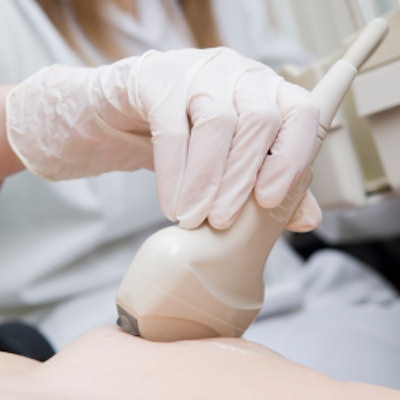
Certain features of invasive breast cancer identified on ultrasound can help clinicians understand a woman's prognosis before she undergoes surgery, according to research presented at the recent RSNA 2017 meeting in Chicago.
In particular, distal acoustic enhancement and skin involvement at ultrasound seem to be strongly associated with breast cancer death, said presenter Dr. Brooke Lawson of Ninewells Hospital and Medical School in Dundee, Scotland.
The study findings show promise for evaluating a woman's breast cancer prognosis preoperatively.
"Preoperative prognostic information in women with breast cancer is increasingly important," Lawson told session attendees. "It can help clinicians assess the appropriateness of neoadjuvant chemotherapy."
Predicting prognosis
Lawson's group sought to examine connections between ultrasound features of invasive breast cancer and breast cancer-specific survival. The study included 287 patients with invasive breast cancer that was visible on ultrasound exams taken between January 2010 and December 2012. The majority of the tumors were grade 2 or 3, Lawson said.
Of the study participants, 63% were symptomatic, while 37% had screen-detected cancers; there were 26 breast cancer deaths and 31 nonbreast cancer deaths over a mean follow-up period of 5.5 years.
Breast radiologists blinded to patient outcomes retrospectively evaluated the ultrasound features of the lesions using the American College of Radiology's BI-RADS ultrasound lexicon, assessing the following:
- Tissue composition
- Mass shape
- Orientation
- Margins
- Echo pattern
- Calcifications
Lawson and colleagues found that distal acoustic enhancement was associated with 72% five-year breast cancer-specific survival, compared with 93% for those with distal shadowing and 97% for those with no distal effect. Skin involvement (that is, either direct invasion or skin thickening over the mass) was associated with 78% five-year breast cancer-specific survival, compared with 94% in women without skin involvement, according to Lawson, and skin changes on ultrasound were associated with larger tumors.
"The majority of lesions with posterior skin enhancement were high-grade," she said.
In terms of ultrasound lesion diameter, women in the top third for this measurement had a five-year breast cancer-specific survival rate of 83%, compared with 96% for women in the middle and bottom thirds.
"We saw a marked increase in mortality in women who had lesions measuring 21 mm or more," Lawson noted.
Mass shape, echogenicity, margin characteristics, orientation, and BI-RADS score were not associated with breast cancer-specific survival, the researchers found.
Skin secrets
Although the study had its limitations, including its small sample size and a relatively short follow-up period, it does suggest a strong correlation between skin involvement and posterior enhancement at ultrasound and breast cancer survival, with skin involvement linked to nodal metastasis and posterior enhancement to high histological cancer grade, Lawson said.
"The presence of distal acoustic enhancement and skin involvement at ultrasound have strong associations with breast cancer death, and these factors should be taken into account, along with lesion size and other conventional prognostic features, when considering management of women with invasive breast cancer," she concluded. "Further studies evaluating larger numbers of patients to assess patient outcomes would be valuable."




















